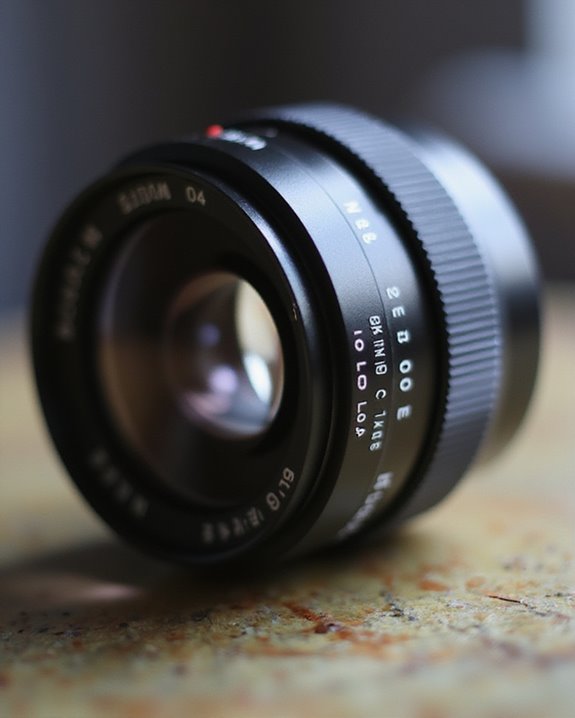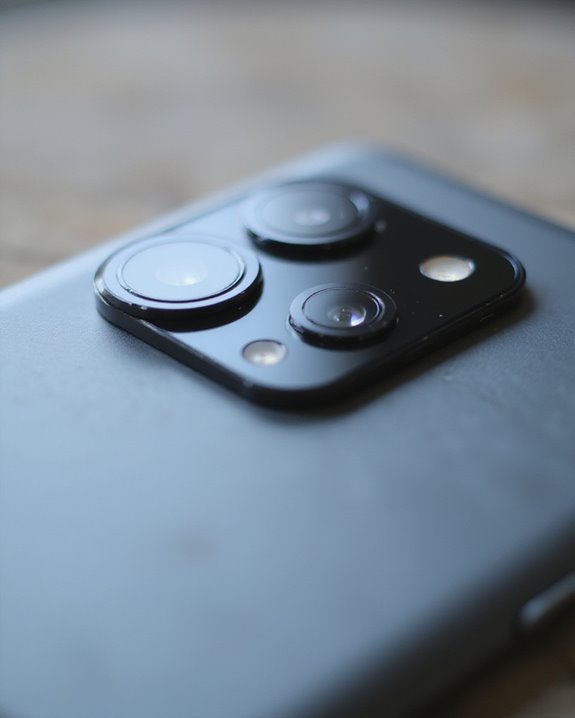Camera lenses greatly impact picture quality through multiple factors. High-quality glass elements minimize aberrations for sharper details, while lens design affects everything from optical clarity to color accuracy. Focal length determines perspective and composition, while aperture controls depth of field and subject isolation. Manufacturing precision, coating technology, and element alignment all contribute to overall image sharpness, contrast, and color reproduction. Understanding these factors helps photographers select ideal equipment for their specific needs.
Key Takeaways
- Camera lenses dramatically affect image quality through their optical elements, glass quality, and precision manufacturing tolerances.
- High-quality lenses with superior glass elements minimize aberrations, resulting in sharper details and better color accuracy.
- Lens aperture capabilities influence depth of field, subject isolation, and low-light performance.
- Focal length choices impact composition, perspective, spatial relationships, and overall visual storytelling.
- Lens resolution capabilities determine how much detail can be captured, especially important when paired with high-resolution sensors.
The Role of Lens Design in Image Sharpness
The lens design serves as the foundation of image sharpness, directly influencing how light reaches the camera sensor. High-quality glass elements, particularly aspherical and low-dispersion varieties, minimize aberrations that would otherwise degrade detail reproduction. The arrangement and count of these elements require precise Alignment Precision, as decentered components cause asymmetrical softness patterns across the frame. Additionally, optical quality plays a crucial role in ensuring the clarity and contrast of images captured with the lens. Manufacturers must optimize the balance between element quantity and overall weight, with premium lenses incorporating specialized coatings to reduce flare that degrades micro-contrast. Thermal Stability plays a vital role in maintaining consistent performance, as temperature fluctuations can alter the spacing between elements through expansion and contraction. This becomes particularly critical in telephoto designs where even minor alignment shifts can dramatically impact resolution, especially when shooting in variable environmental conditions.
How Lens Quality Impacts Visual Clarity
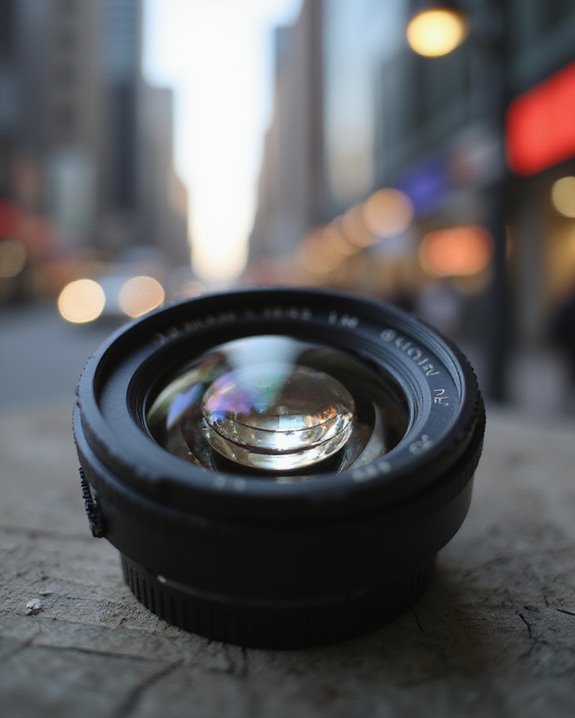
Why does lens quality invariably influence visual clarity across photographic applications? The manufacturing precision and material composition directly affect how accurately images are rendered. High-index materials reduce thickness while maintaining clarity, and precision engineering tolerances under 5 microns guarantee uniform surfaces that minimize light diffusion. These factors greatly impact Color Accuracy through advanced polymers that reduce chromatic aberrations. Additionally, the use of high-quality optical coatings enhances light transmission and contrast. Light Transmission quality depends heavily on anti-reflective coatings that mitigate glare and hydrophobic treatments that prevent smudges from diffusing light details. Low-dispersion glass elements separate light wavelengths properly, preventing color fringing that diminishes image quality. Additionally, material purity minimizes internal light refraction anomalies, guaranteeing accurate color rendering from edge to edge. Environmental factors further impact clarity, as thermal-stable materials resist warping that could misalign optical elements.
Understanding Focal Length and Its Effect on Image Composition

Focal length represents one of photography’s most fundamental parameters, determining how a camera lens renders perspective and spatial relationships within an image. This measurement, expressed in millimeters, directly influences both the angle of view captured and the magnification of subjects within the frame, making it essential to composition techniques.
Different focal lengths create distinct perspective effects within photographs: wide-angle lenses (below 35mm) capture broader scenes with exaggerated depth, standard lenses (around 50mm) approximate human vision for natural-looking images, and telephoto lenses (above 85mm) compress space between elements while magnifying distant subjects. Photographers strategically select focal lengths to control how viewers interpret spatial relationships, with wide angles emphasizing environmental context and telephotos isolating subjects against compressed backgrounds. Understanding these characteristics allows photographers to manipulate visual storytelling through deliberate focal length selection.
Aperture Settings and Their Influence on Picture Depth
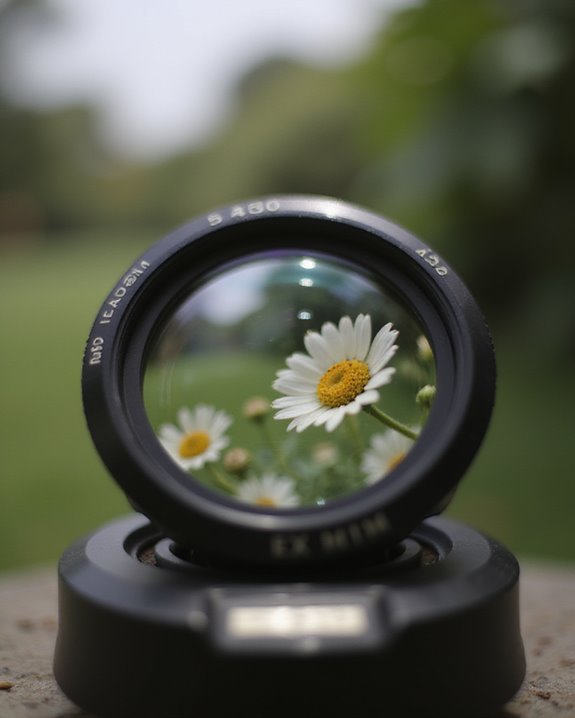
Aperture settings constitute one of the most powerful creative controls available to photographers, functioning as the adjustable opening within a lens that regulates light transmission and dramatically affects an image’s depth characteristics. Wide apertures (f/1.4-f/2.8) create shallow depth of field, isolating subjects against pleasingly blurred backgrounds with distinctive Bokeh Effects that enhance subject prominence. Conversely, narrow apertures (f/11-f/22) extend focus throughout the scene, providing greater Depth Variation from foreground to background.
The interplay between aperture, focal length, and subject distance offers photographers precise control over which elements remain sharp. Telephoto lenses combined with wide apertures amplify background blur, while wide-angle lenses naturally maintain greater overall sharpness. This relationship allows photographers to direct viewer attention and establish visual hierarchy within compositions through deliberate focus management.
The Relationship Between Camera Bodies and Lens Performance
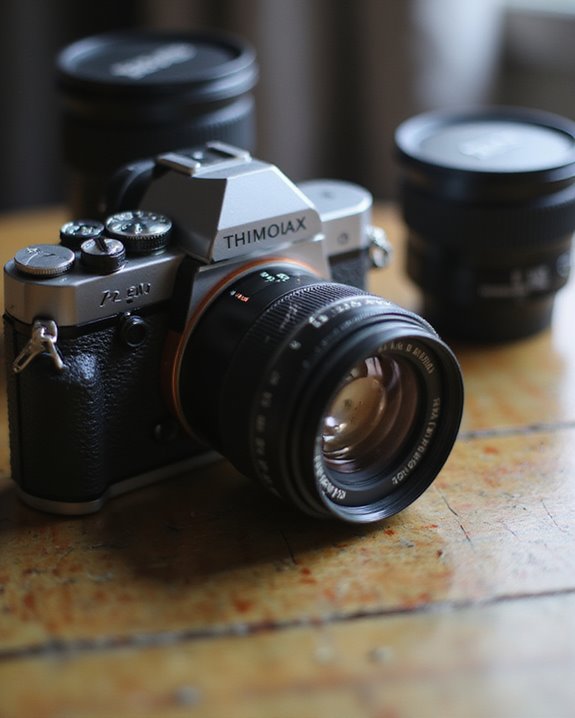
The symbiotic relationship between camera bodies and lenses forms the foundation of photographic image quality, with each component contributing distinct yet interdependent elements to the final result. Body compatibility directly impacts system performance through electronic communication protocols, where newer mounts like Canon’s RF facilitate faster data transfer for improved autofocus accuracy. Modern camera systems depend on harmonious integration between sensor technology and lens capabilities, particularly with high-resolution sensors exceeding 45MP that demand superior optics to resolve fine details effectively.
Firmware updates represent a critical aspect of long-term system optimization, enhancing lens-body communication and introducing computational photography features like eye-tracking autofocus or aberration correction. However, manufacturers may prioritize newer equipment, potentially leaving older lens compatibility unsupported despite the optics themselves remaining technically capable of producing excellent images when properly matched to appropriate camera bodies.
Recognizing Signs of Lens Damage Affecting Your Photos
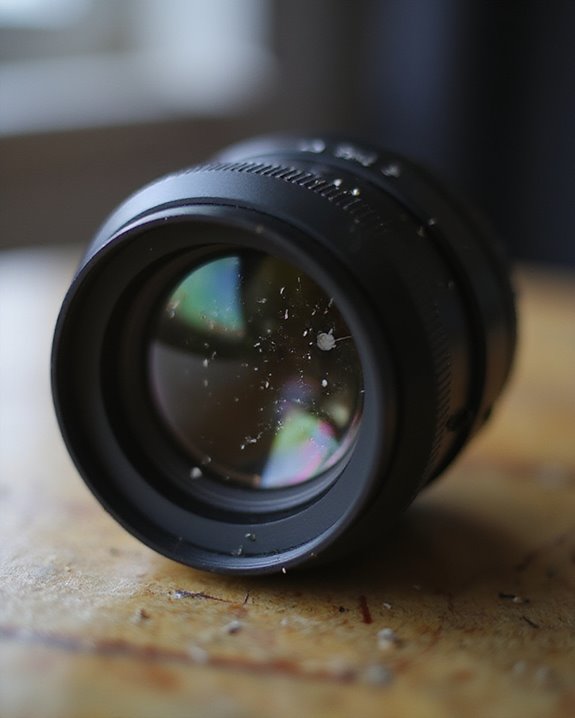
Recognizing physical damage to a camera lens remains critical for photographers seeking to maintain ideal image quality, as even subtle imperfections can greatly impact results under certain shooting conditions. Symptom identification begins with visual inspection for scratches, dust, fingerprints, or haze, while performance issues like focus problems, unusual reflections, or distortion in images further indicate potential damage. When examining photos, photographers should look for telltale signs including loss of clarity, reduced contrast, color aberrations, or unexpected glare, particularly when shooting in bright environments. Additionally, understanding lens protection measures, such as using high-quality lens covers and filters, can significantly reduce the risk of damage and preserve image quality over time. Damage prevention strategies include using protective filters, lens caps, and proper cleaning techniques with appropriate microfiber cloths and solutions. Regular maintenance schedules, careful handling practices, and storage in dry environments substantially reduce the risk of common issues such as condensation, impact damage, and moisture ingress that lead to costly repairs or replacement.
Measuring Lens Quality: Beyond Marketing Claims
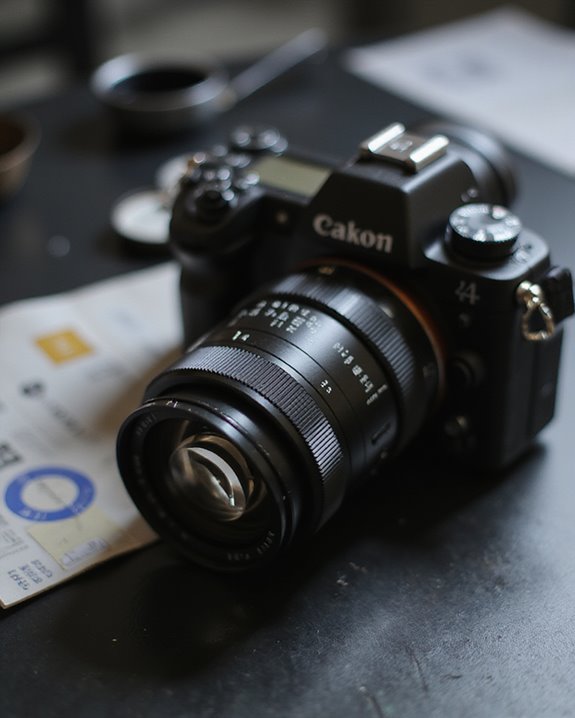
How can photographers separate marketing hype from genuine lens performance when evaluating optical quality? The most reliable method involves objective measurements using standardized testing protocols that quantify actual optical performance. MTF Evaluation (Modulation Transfer Function) serves as the industry standard, providing graphical representations of how well a lens maintains contrast at various spatial frequencies, both at the center and edges of the frame.
Beyond MTF curves, thorough quality assessment includes PSF Analysis (Point Spread Function), which examines how a lens renders point light sources. Additional metrics like perceptual megapixels translate technical measurements into practical understanding by estimating the effective resolution a lens-sensor combination delivers. These objective measurements offer photographers concrete data on sharpness, contrast, and resolution capabilities, enabling informed decisions based on actual performance rather than marketing claims.
Frequently Asked Questions
Can Vintage Lenses Produce Better Results Than Modern Counterparts?
Vintage lenses can produce aesthetically different—not necessarily better—results than modern counterparts. Their Retro Appeal offers unique character while lacking the technical precision that Tech Evolution has brought to contemporary optics.
How Do Weather Conditions Affect Lens Performance?
Weather conditions greatly impact lens performance. Dust storms can damage lens elements and degrade clarity. Snow effects include increased glare, potential fogging, and temperature-related contraction that affects focus accuracy and image sharpness.
Does Lens Price Always Correlate With Image Quality?
Like Icarus flying too close to the sun, lens price doesn’t always guarantee perfection. Price impact varies, with diminishing returns at higher price points. Quality variance exists between lens types, particularly in zoom lenses.
Can Lens Adapters Impact Picture Quality Significantly?
Lens adapters can impact image quality substantially. Poor adapters may cause vignetting and compromise focus accuracy. Higher quality adapters minimize these issues, though electronic functionality might still be limited compared to native lenses.
How Do Third-Party Lenses Compare to Manufacturer-Branded Options?
While brand loyalists shudder at the thought, modern third-party lenses often rival manufacturer options in lens sharpness. However, differences may emerge in autofocus speed and build quality, with branded lenses generally maintaining slight advantages in reliability.



